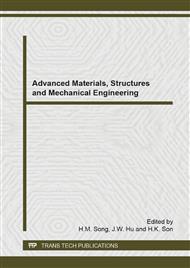p.1031
p.1035
p.1041
p.1049
p.1055
p.1062
p.1066
p.1070
p.1074
Modelling and Characterization of Planar Components
Abstract:
An approach for modeling and numerical simulation of planar components using the edge line concept is developed. With this method, we develop an efficient modeling technique for microstrip discontinuities. The structure presents an arbitrary number of ports, each one with different orientation and dimensions. This article presents a hybrid method based on multimode contour integral and mode matching techniques. The process is based on segmentation and dividing the structure into key building blocks. We use the multimode contour integral method to analyze the blocks including irregular shape discontinuities. Finally, the multimode scattering matrix of the whole structure can be found by cascading the blocks. Therefore, the new method is suitable for analysis of a wide range of waveguide problems. Therefore the present approach can be applied easily to the analysis of any multiport junctions and cascade blocks. The accuracy of the method is validated comparing with results for several complex problems found in the literature. CPU times are also included showing the efficiency of the new method proposed.
Info:
Periodical:
Pages:
1055-1061
Citation:
Online since:
September 2014
Authors:
Keywords:
Price:
Сopyright:
© 2014 Trans Tech Publications Ltd. All Rights Reserved
Share:
Citation:


